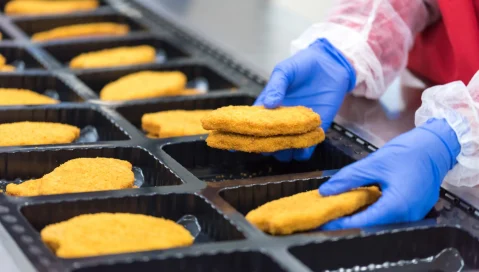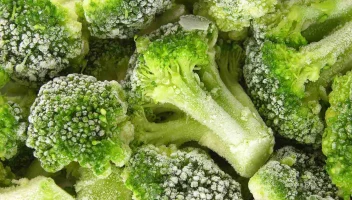Emerging Trends in Food and Beverage Packaging
Emerging Trends in Food and Beverage Packaging
Emerging Trends in Food and Beverage Packaging
27 Jul 2021
Jack Payne
The 2020s could well become known as the decade of packaging innovation in the food and beverage industry. Driven by shifting demand in a number of areas—including sustainability, customer convenience and increased desire for transparency—we are seeing a fundamental rethink of the way food manufacturers, processors and packaging companies package their products.
Let’s take a look at some of the most exciting emerging trends in food packaging, and what they might mean for the industry’s future.
Sustainability Initiatives
Over recent years, there has been a huge clamor for more sustainable packaging of everyday items—most prominently food and drink. This has largely been in the form of movements to greatly reduce the prevalence of single-use plastics—a cause that has rapidly garnered huge levels of public support over the last five years.
It is this sudden groundswell of support from the public that has really sparked the explosion in sustainable packaging alternatives. 67% of consumers globally think it is important that the products they purchase come in recyclable packaging, with 54% saying it is an active consideration when shopping. These attitudes aren’t going anywhere, with a huge 83% of younger shoppers willing to pay more for sustainably-packaged products. So, what are the options to satisfy this concern?
Paper packaging. Paper and cardboard are emerging as viable alternatives to plastic packaging for many different food products. Paper packaging can more easily be made out of recycled materials, and itself be recycled or composted. Meanwhile, paper alternatives can achieve the same strength, moisture resistance and durability as plastic through sustainable strengthening techniques (e.g. water-based coatings). There is also a trend in the pre-packaged food sector of companies swapping out plastic straws and cutlery for paper/wooden alternatives.
Reducing packaging volume. Perhaps the simplest way to improve sustainability in food packaging, removing unnecessary components, can still have a big impact. It’s not uncommon to see foods packaged with excessive amounts of plastic—for instance in the case of individually packaged fruits. This is a result of bad packaging design and is not only wasteful, but more expensive too. Identifying and removing packaging components that aren’t integral for freshness or safety is a great first step.
Refillable packaging. One way of making packaging manufactured from materials like plastic more sustainable is by encouraging consumers to reuse them and giving them the means to do so. While still a fringe idea, the concept of reusable food packaging is one that has found small-scale success, with some direct-to-consumer food companies collecting packaging materials for everyday items, sanitizing them and reusing them for future deliveries. Such packaging is thought to be “environmentally neutral” after around 3 uses. The idea is becoming increasingly popular in the retail sphere too, with the Netherlands’ largest retailer providing reusable bags for fruit and vegetables.
Recycled plastic packaging. Incorporating recycled plastics into food packaging is another great way to reduce the overall impact of plastic packaging on the environment and demonstrate sustainable credentials to consumers. While it is a challenge to produce packaging from recycled plastic that is food-safe, more and more innovative technologies are emerging in this area to help reduce the amount of brand new plastics used in food packaging.
Helping the Consumer
While sustainable packaging is becoming a must-have for companies to meet their environmental commitments and align themselves more closely with their customers’ values, there are a whole range of other food packaging innovations serving a different purpose.
In saturated markets, food and beverage products must vie for the attention of shoppers. As the first point of interaction the consumer has with a product, packaging is all-important for winning new customers. But no longer is this innovation simply limited to bold and eye-catching designs. Some of the most modern food packaging is incorporating features that are truly helpful to consumers.
Integration of technology. Advances in technology and the ubiquity of smartphones mean the time is right for technological integrations to become an everyday aspect of the food-buying process. Technology like QR codes and NFC chips are a great, and novel, way to give customers more information about what they’re buying. These “smart labels” give shoppers the ability to access nutritional data and insights into how the product was made in a matter of seconds—all while cutting down on the material needed for labeling.
Clear labeling. Shoppers have never been more discerning about the foods they buy—meaning they now demand clear and transparent labels on all the foods they buy. Products with labels that prominently display nutritional content, allergens, the food’s origins and whether or not it is suitable for vegetarians are increasingly more popular with consumers. No longer can labels get away with hiding this crucial information in the fine print.
Minimalism. The days of product packaging cluttered with words and images may be coming to an end. Consumers are increasingly opting for products with a clean design that simply and powerfully conveys its core value. As well as being visually striking, minimalist packaging designs also help cut down on unnecessary additions like plastic sleeves, and cost less for the manufacturer too.
Adapting to Current Packaging Needs in the Food and Beverage Industry
While every food company that counts packaging as part of its core activities will need to evolve and improve in the coming years, this won’t come without challenges. Businesses will need to rethink their manufacturing processes and collaborate with other stakeholders in the supply chain. In many cases, costs involved with packaging will increase as a result of needing to use more expensive innovative materials.
Whatever challenges packaging changes bring to your business, you can get ahead of the game with food and beverage ERP (enterprise resource planning). ERP is an integrated software framework bringing all aspects of your food business into closer alignment, and all parts of your technology stack onto a single platform. It’s the perfect foundation to help you integrate new packaging materials and technologies in the most cost-effective way possible.
Find out more about our market-leading solution—Aptean Food & Beverage ERP—and how we can help your food business increase efficiency and maximize performance by speaking with our team today.
Related Content





Get in touch today to speak with an expert in your industry
To grow your business, you need a food ERP built specifically for your industry challenges. We're ready to help—reach out today and we'll help you find the right solution.



